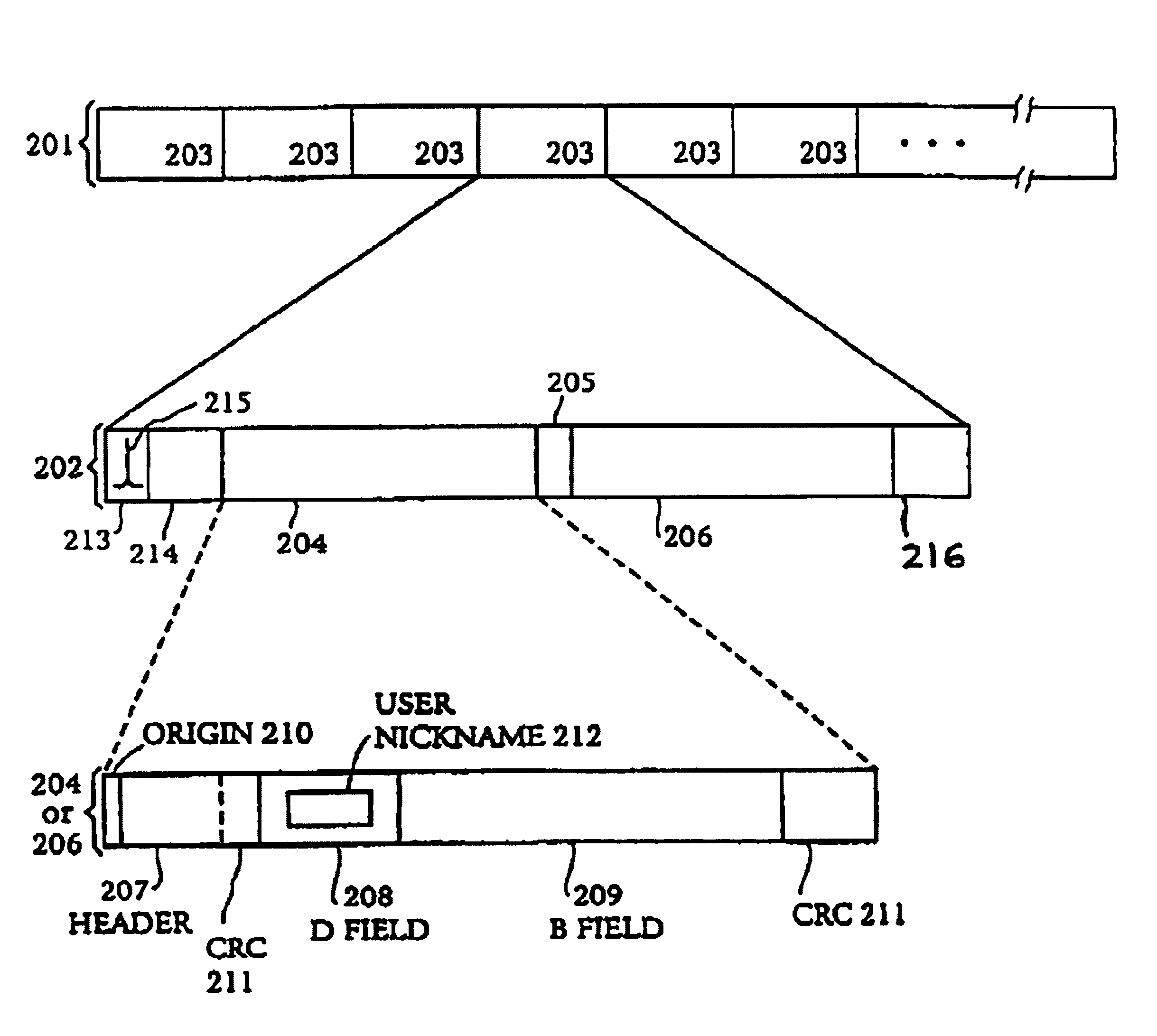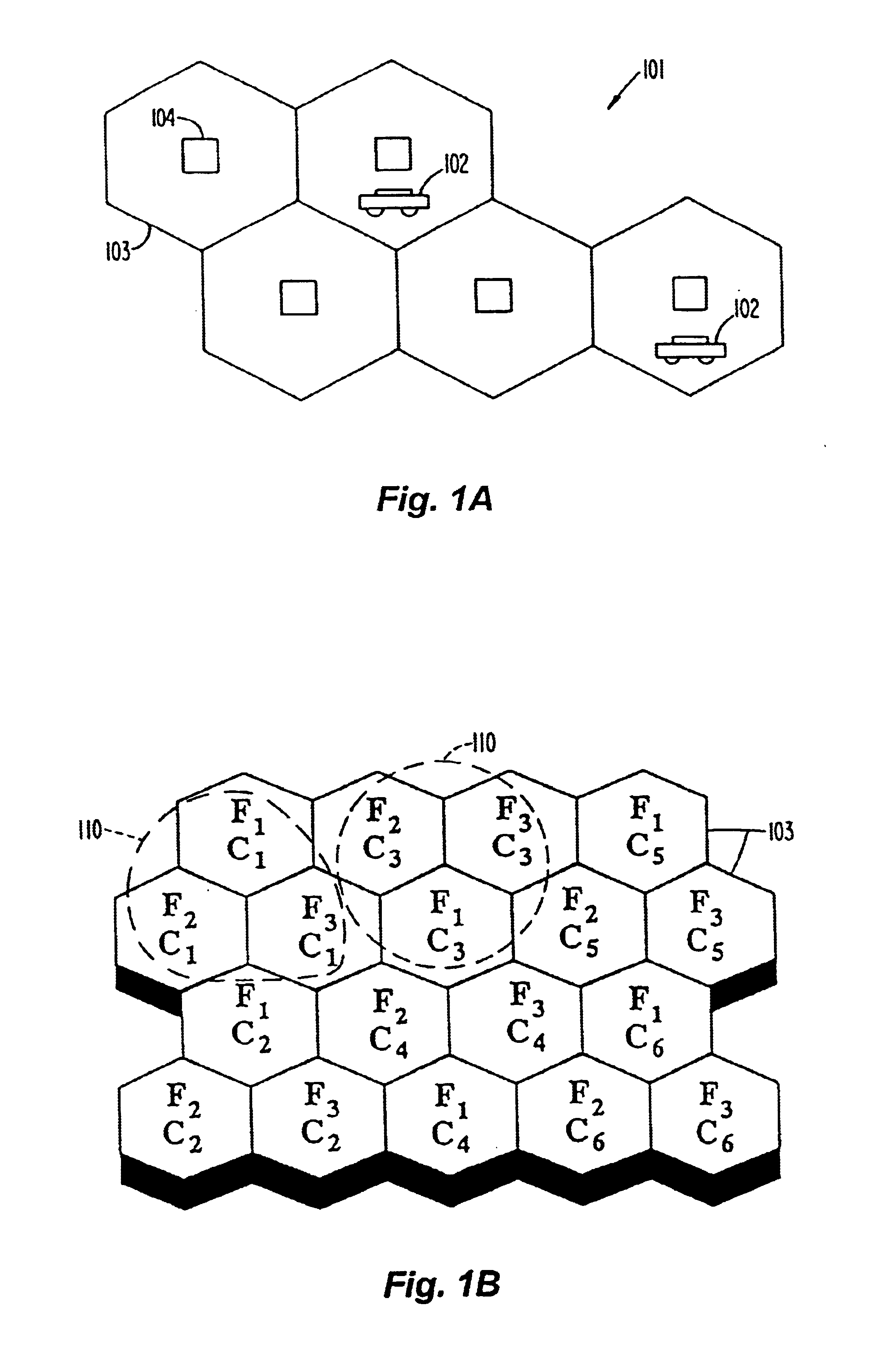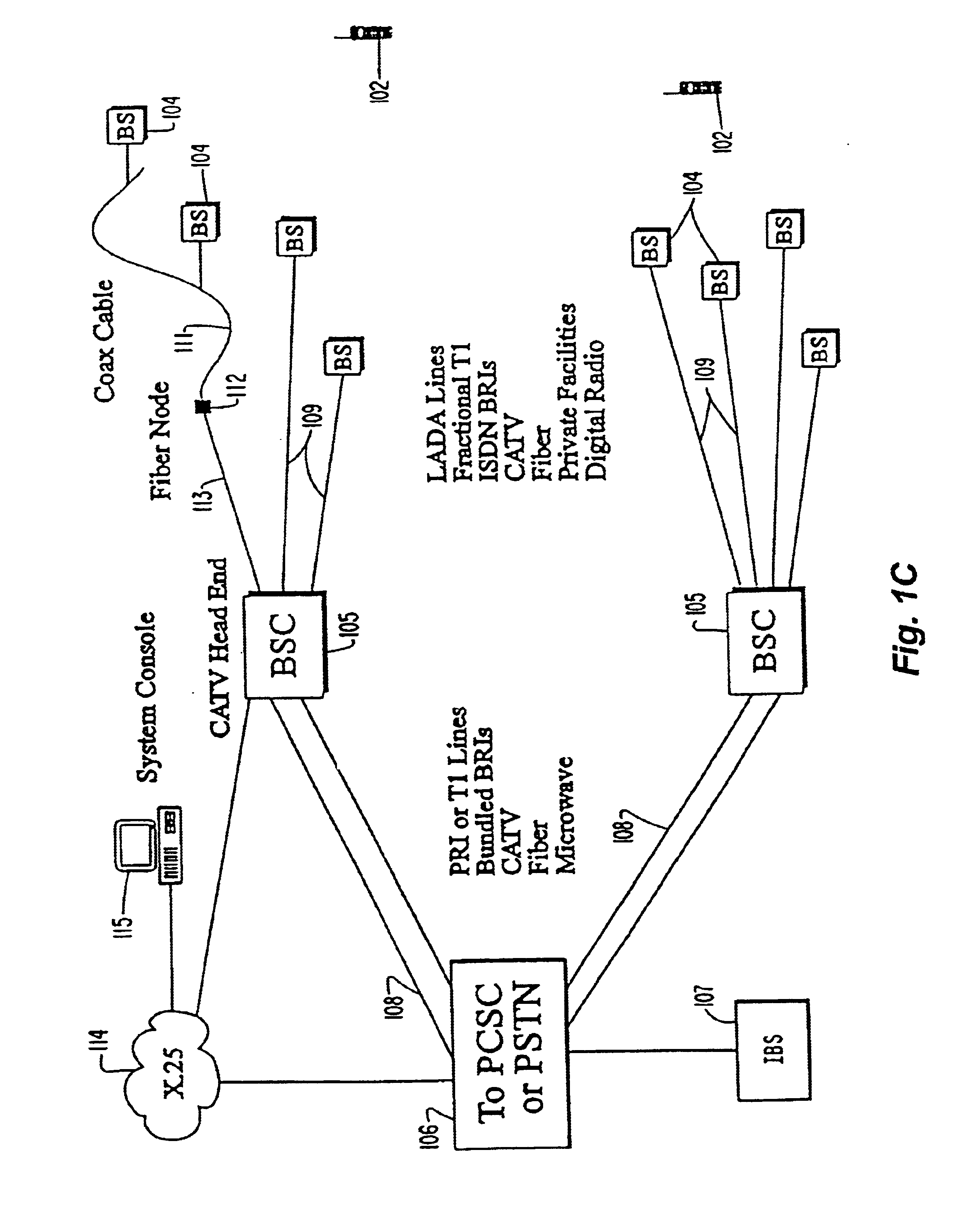Method and Apparatus for wireless spread spectrum communication with preamble processing period
a technology of preamble and wireless spread spectrum, applied in the field of communication, to achieve the effect of reducing intercell interference, prolonging the battery life of mobile handsets, and increasing the data ra
- Summary
- Abstract
- Description
- Claims
- Application Information
AI Technical Summary
Benefits of technology
Problems solved by technology
Method used
Image
Examples
Embodiment Construction
[0020]In a preferred embodiment, it is contemplated that communication between base stations and user stations will be conducted using a spread-spectrum technique. There are at least three methods for establishing synchronization and communication, each preferably using an M-ary technique in which multiple bits of data are transmitted for each spread-spectrum symbol, e.g., by transmitting and receiving multiple different spreading codes, and interpreting the received one of those multiple different spreading codes at the receiver to indicate multiple data bits. Synchronization may be accomplished either by (1) automatic synchronization disclosed in co-pending application Ser. No. 08 / 146,491, entitled “DESPREADING / DEMODULATING DIRECT SEQUENCE SPREAD SPECTRUM SIGNALS”, filed on Nov. 1, 1993 in the name of inventors Robert Gold and Robert C. Dixon, hereby incorporated by reference, by (2) synchronizing with matched filters, by (3) demodulation and dispreading using sliding correlarors,...
PUM
 Login to View More
Login to View More Abstract
Description
Claims
Application Information
 Login to View More
Login to View More - R&D
- Intellectual Property
- Life Sciences
- Materials
- Tech Scout
- Unparalleled Data Quality
- Higher Quality Content
- 60% Fewer Hallucinations
Browse by: Latest US Patents, China's latest patents, Technical Efficacy Thesaurus, Application Domain, Technology Topic, Popular Technical Reports.
© 2025 PatSnap. All rights reserved.Legal|Privacy policy|Modern Slavery Act Transparency Statement|Sitemap|About US| Contact US: help@patsnap.com



